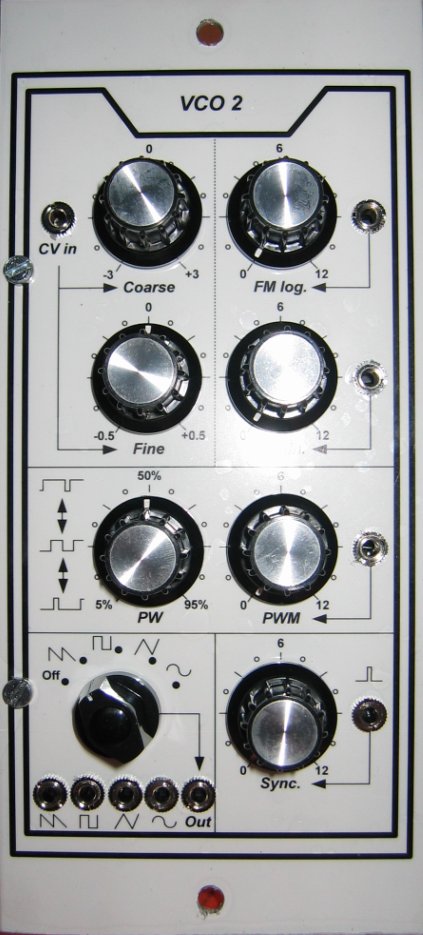
You can find several VCO circuits in the WEB which work with a dual transistor and a tempco resistor for temperature compensation, for example the ASM-VCO or the VCO3 of René Schmitz.
I decided to try out René's VCO3, and this became my first VCO2. Additionally this gave me reason to design a new front panel, as my old panel needs too much panel space for the components. I removed the voice selection knob (and saved some more space) because I will operate the vco bank with external CVs only.
Besides that the panel contains the same functionality as the VCO1, but I mounted a twist knob instead of a normal level knob for selecting the output waveform to differ optically between switch and poti.
Comparing MSS2000-VCO und VCO2
I have not tested all features of the new VCO emphasized on René's site in detail, but the results look good so far.
One thing to mention is the CA3080 based sine wave shaper of the VCO2 which works much better than the diode circuit in the Formant VCO. Another point is that the V/Oct adjustment was much easier to do. I soldered all trim pots in middle position and had to correct only slightly in all cases.
For testing of the temperature stability I let all VCOs sing in perfect consonance. I was very happy hearing all VCOs staying together in trinity (indeed their frequencies stuck together like burger layers until the test tone penetrated my nervs and I switched it off), so one can say that both principles of temperature stabilization (heated 3046/3086 in the Formant VCO and the combination of KTY81-120 tempco and dual transistor in the new VCO) seem to work in the same quality looking to the average frequency, but the temperature stabilization of the new VCO works a little more erratic which can be heard as slight frequency jumps. The MSS2000 VCOs correct temperature effects in a smoother way.
Another difference is the sync method: the new VCO uses a hard sync and the MSS2000 VCO syncs softly.
Schematic:
The schema can be found here.
Sound example:
Can be found here.
Reproduction hints:
None